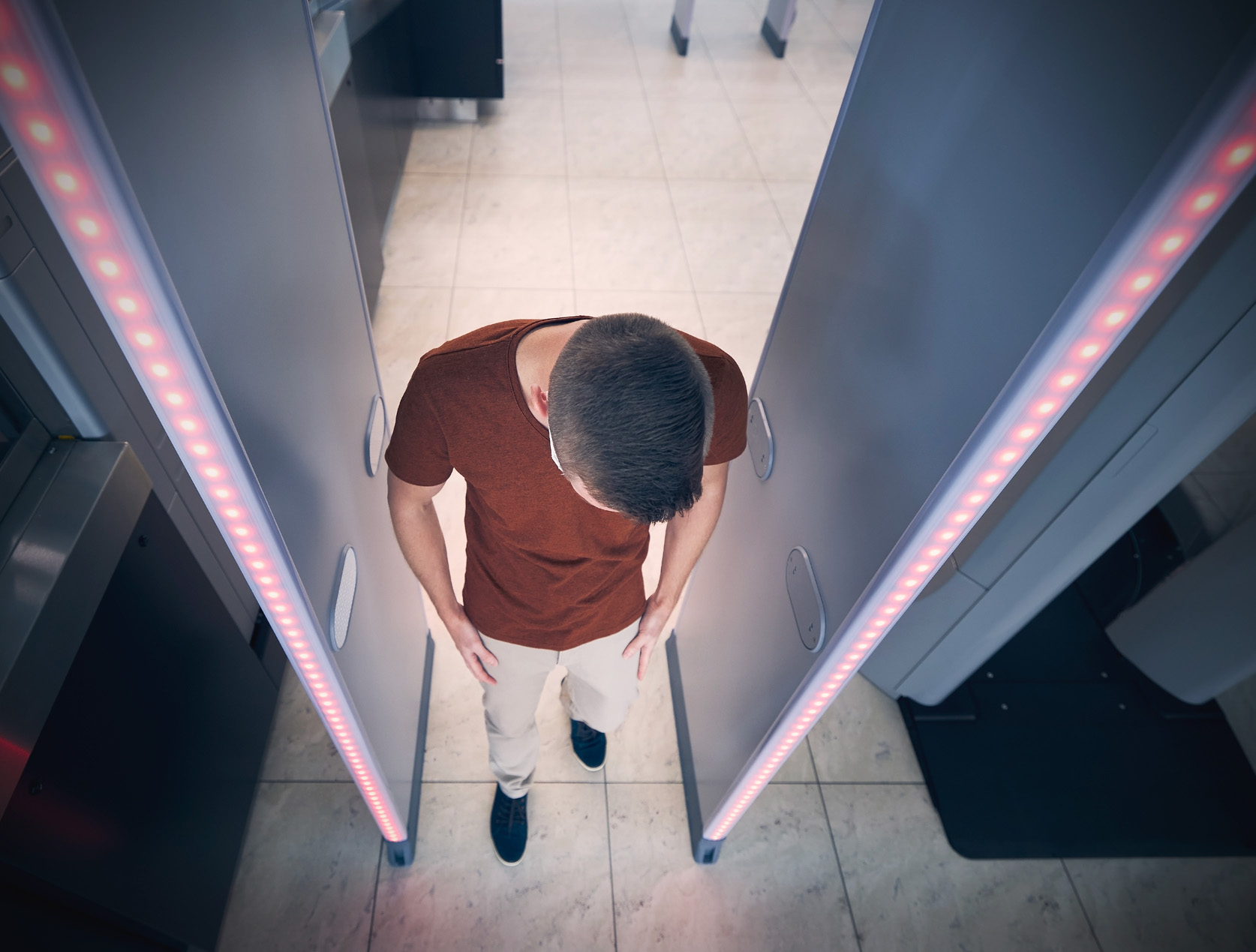
Do Metal Detectors Improve School Security?
Jonathan Kremser, Ph.D.
After a highly publicized attack on a school, one common suggestion, usually coming from concerned parents, is to install a metal detector in their child’s school. Metal detectors and X-ray machines can be used by school security to screen students for weapons. Metal detectors, which can be either a stationary walk-through unit or hand-held wand, search for weapons on a person’s body, whereas X-ray machines are used to inspect bags for contraband (Green, 2005). Their use can vary from daily searches of all students entering school, to random inspections. The devices are mainly used at the designated entrance to the school. Furthermore, metal detectors are mainly used at high schools and to a lesser extent in middle/junior high schools. They are rarely found in elementary schools (Garcia, 2001).
A Brief History of Metal Detector Use in Schools
The first notable use of metal detectors was in the 1980s, as part of the political shift towards getting tough on youth crime. The devices were installed primarily in urban schools in the United States. There was a slight increase in the number of schools using this technology after the 1999 shooting at Columbine High School in Colorado, and again after the 2012 shooting at Sandy Hook Elementary in Connecticut. There were renewed calls for the use of metal detectors after the 2018 Parkland high school shooting in Florida, in addition to state mandates requiring schools to do something to improve physical security. While metal detectors receive parental and media attention as a solution to school violence, research suggests the devices are unpopular approaches with most schools across the United States (Daniels, Royster, & Vecchi, 2007).
Metal Detectors and the Perception of School Safety
While metal detectors may provide parents with tangible evidence that something is being done to improve school security, these devices may have the unintended consequence of undermining student perception of safety. Some research has found that students report feeling less safe in schools where metal detectors are present, compared to students in schools without them (Cornell, 2015; Gastic, 2011; Perumean-Chaney & Sutton, 2013). Similarly, students at schools with metal detectors may perceive that their school has more violence and disorder (Mayer & Leone, 1999).
Are metal detectors effective at deterring or preventing an act of violence?
If the school has a metal detector at the entrance, and an armed assailant wants to enter the school, there is a tactical concept known as “action versus reaction.” (FASTERSavesLives, 2021, 1:07:20). For example, if somebody is carrying a concealed firearm, they will have the first shot against the individual at the school entrance who is operating the metal detector (i.e., a tactical advantage). On March 21, 2005, a student at Red Lake High School in Minnesota arrived at the entrance to his school. The school had a stationary metal detector, but the assailant shot and killed the unarmed security officer who was operating the device. The shooter was armed with three weapons and walked through the metal detector and into the school. Seven people, including the security officer were killed and five others were injured in the attack.
As with other technologies, metal detectors are subject to failure when the human element is introduced. School staff often lack training in how to correctly use metal detectors. The devices can be set too low to detect a weapon, not all students are likely to be screened, and in some cases the devices may be faulty or switched off during student arrival (National School Safety and Security Services, n.d.). Additionally, how would the school screen the students if one or more of the security employees who operate the device are out sick for a few days?
Conclusion
There is little evidence to support the effectiveness of metal detectors at preventing a school attack. A review of 15 years of research concluded that metal detectors have no apparent effect on reducing injuries, deaths, or threats of violence on school grounds (Hankin, Hertz, and Simon, 2011). Additionally, they are expensive to purchase, staff, and use in a consistent or effective manner. A determined assailant is going to figure out a way around it. When it comes to keeping schools safe, there is no perfect solution.
References
Cornell, D. G. (2015). Our schools are safe: Challenging the misperception that schools are dangerous places. American Journal of Orthopsychiatry, 85(3), 217–220
Daniels, J. A., Royster, T. E., & Vecchi, G. M. (2007). Barricaded hostage and crisis situations in schools: A review of recent incidents. Proceedings of Persistently Safe Schools: The 2007 National Conference on Safe Schools and Communities. Retrieved from https://www.ncjrs. gov/pdffiles1/ojjdp/grants/226233. pdf?q=student-reports-ofbullying-results-from-the-2001- school#page=75
[FASTERSavesLives]. (2021, April 21). Experts Town Hall Effective Response to Active Killer Events [Video]. YouTube. https://www.youtube.com/watch?v=p0vilTb3bEY
Garcia, C. (2001). Measuring the use of safety technology in American schools: A national survey of school safety administrators.
Gastic, B. (2011). Metal detectors and feeling safe at school. Education and Urban Society, 43(4), 486–498.
Green, M. W. (2005). The appropriate and effective use of security technologies in U.S. schools: A guide for schools and law enforcement agencies. Washington, DC: National Institute of Justice.
Hankin, A., M., Hertz, and T. Simon (2011). Impacts of metal detector use in schools: Insights from 15 years of research. Journal of School Health, 81 (2): 100-106.
Mayer, M. J., & Leone, P. E. (1999). A structural analysis of school violence and disruption: Implications for creating safer schools. Education and Treatment of Children, 22(3), 333–356.
National School Safety and Security Services. (n.d.). School metal detectors. Retrieved from http://www.schoolsecurity.org/ trends/school-metal-detectors/
Perumean-Chaney, S. E., & Sutton, L. M. (2013). Students and perceived safety: The impact of school security measures. American Journal of Criminal Justice, 38(4), 570–588.
Schildkraut, J., & Grogan, K. (2019). Are metal detectors effective at making schools safer? San Francisco, CA: WestEd. Retrieved from https://www.wested.org/resources/ are-metal-detectors-effective-at-making-schools-safer



